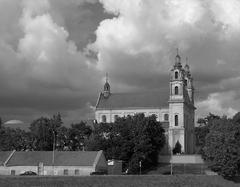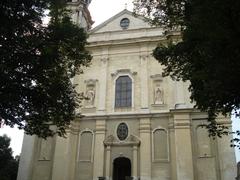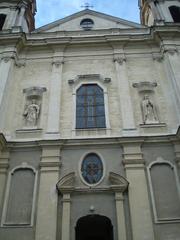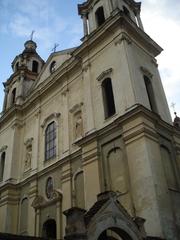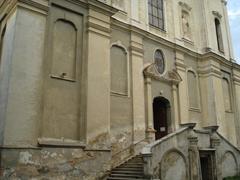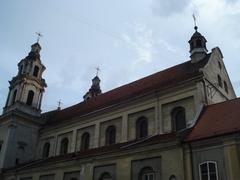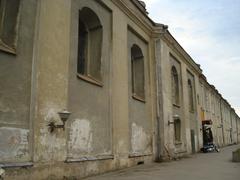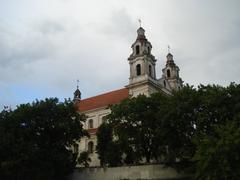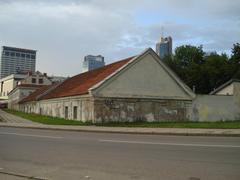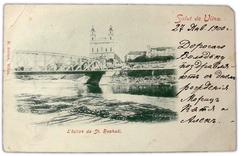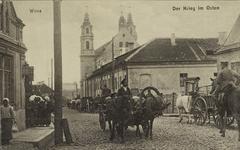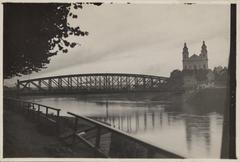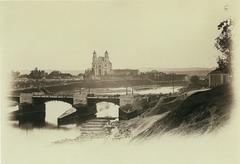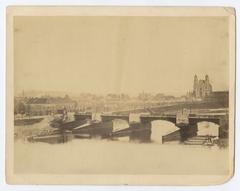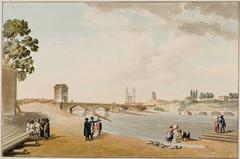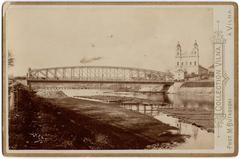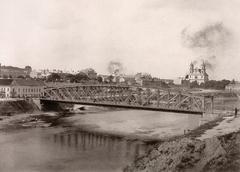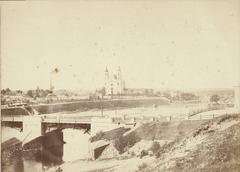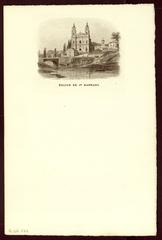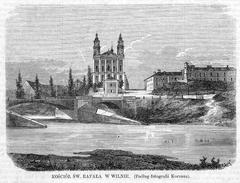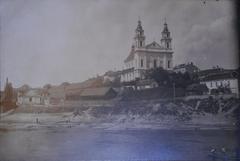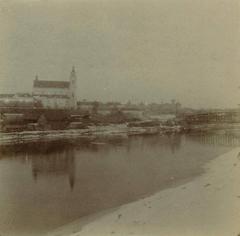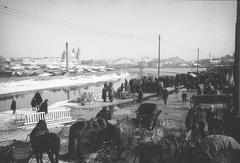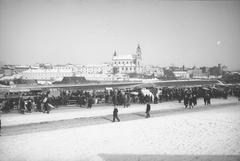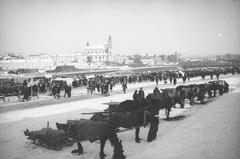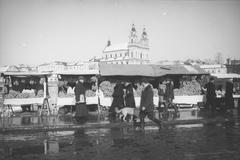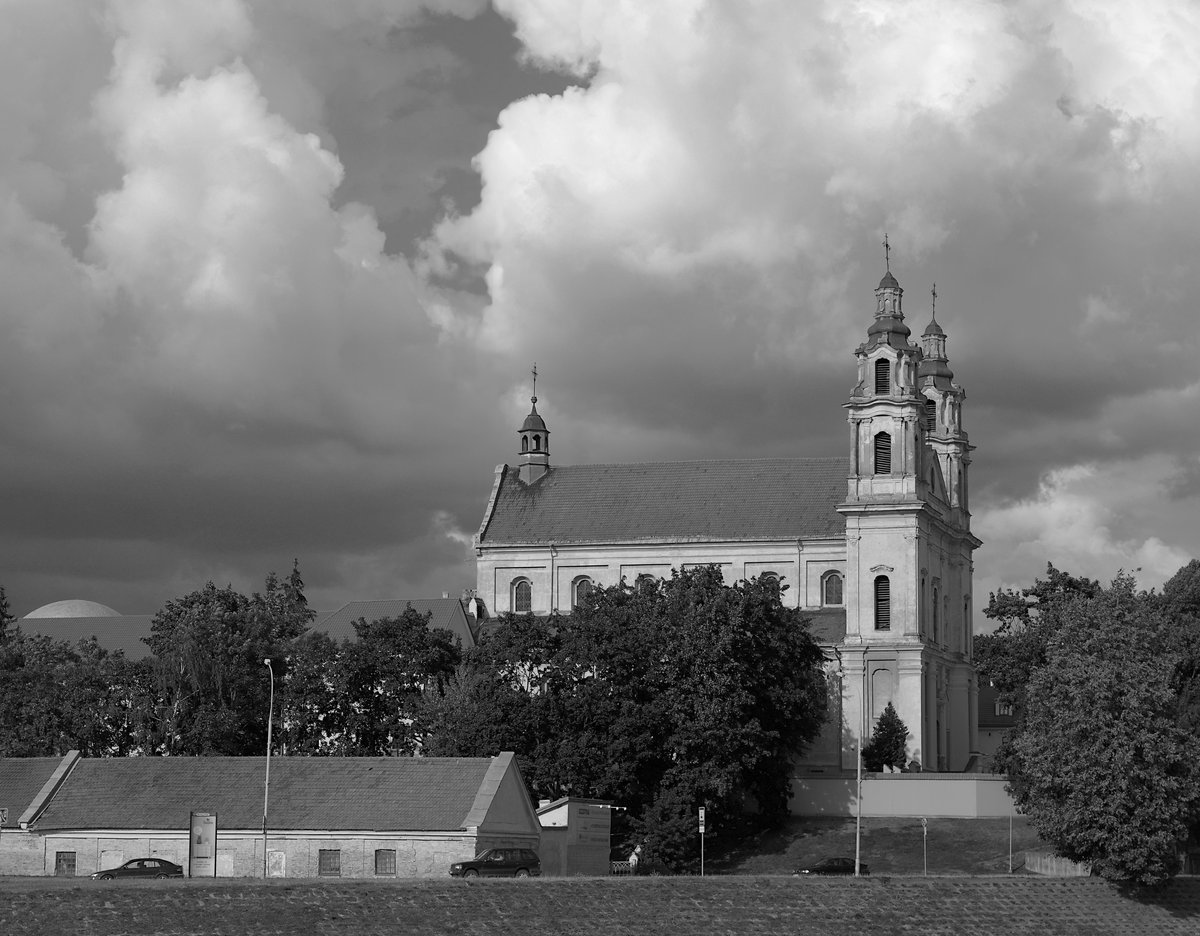
Church of St. Raphael Vilnius: Visiting Hours, Tickets, and History Guide
Date: 15/06/2025
Introduction
The Church of St. Raphael the Archangel in Vilnius, Lithuania, stands as a powerful testament to the city’s Baroque heritage and its vibrant religious traditions. Nestled in the historic Šnipiškės district near the Neris River and the Europa Tower, this late Baroque gem was commissioned by the Jesuit order in the early 18th century. Its harmonious façade, distinctive twin spires, and intricate stucco details have earned it a prominent place in Vilnius’s architectural landscape, often celebrated as the “Baroque capital” of Eastern Europe (Lonely Planet; Kurby Blog).
Beyond architecture, the church has played pivotal roles in education, missionary work, and as a symbol of perseverance through periods of religious suppression, war, and political change. Today, it serves as an active parish and a cultural landmark, offering visitors a unique experience at the intersection of art, history, and faith (cityofmercy.lt).
Table of Contents
- Origins and Foundation
- Architectural Features
- Historical Context and Transformations
- Cultural and Religious Significance
- Visitor Information
- Restoration and Preservation
- Integration with Vilnius’s Urban Landscape
- FAQs
- Visuals and Media
- Explore More
- Summary and Final Tips
- References
Origins and Foundation
The Church of St. Raphael was established by the Jesuits between 1702 and 1722, strategically expanding their mission north of Old Town into the developing Šnipiškės district (Lonely Planet). Supported by Lithuanian nobility, including prominent families such as the Sapiehas and Radziwills, the church and its monastery became a hub for Jesuit education and religious outreach (discover-country.com).
Dedicated to the Archangel Raphael—patron of healing and journeys—the church embodied the Jesuits’ commitment both to spiritual guidance and social care, particularly during the religiously diverse and dynamic Counter-Reformation era (Kurby Blog).
Architectural Features
Exterior
The church is a prime example of late Baroque style, with a façade divided into three vertical sections and dominated by twin towers capped by Baroque domes and lanterns (Trafalgar). Stucco ornamentation, niches with saints’ statues, and a pastel façade restored to its historic color scheme create a visually inviting entrance.
Interior
Inside, the Latin cross layout features a single nave flanked by side chapels and a transept, all unified by robust columns, arches, and vaulted ceilings. Elaborate stucco work, gilded details, and frescoes with motifs of angels and acanthus leaves decorate the ceiling and walls, creating a luminous and festive atmosphere (Trafalgar).
The high altar, a highlight of Baroque artistry, is adorned with gilded woodwork, Solomonic columns, and a central painting of St. Raphael escorting Tobias—a vivid expression of Jesuit spirituality and Counter-Reformation theatricality. Each side chapel is uniquely decorated, often dedicated to various saints, and features altars, sculptures, and ornate ironwork (cityofmercy.lt).
Monastery Complex
Adjacent to the church, the former Jesuit monastery blends simple Baroque design with arched windows and a cloistered courtyard. It originally housed monks devoted to education and charity, and today contains the Department of Cultural Heritage, connecting past and present (cityofmercy.lt).
Historical Context and Transformations
St. Raphael’s history mirrors Lithuania’s turbulent path. Following the Jesuit suppression in 1773, the church passed to the Piarists and later endured secularization, use as a warehouse and army barracks, and neglect during the Russian and Soviet periods. Despite adversity, the church remained a spiritual stronghold and was restored for worship in 1860. The resilience of the parish community and the site’s continued function as a Catholic church underscore its enduring significance (Lonely Planet).
Cultural and Religious Significance
St. Raphael’s is one of Vilnius’s few Baroque churches outside the Old Town, symbolizing the Jesuits’ expansion and the city’s evolving identity. It hosts regular Masses, is part of the “Jesuits in Vilnius” pilgrimage route, and holds significant religious art, including paintings of St. Ignatius Loyola, St. Francis Xavier, and a wayside shrine with a statue of Christ Carrying the Cross from the 1710 plague era (cityofmercy.lt).
The church has also played a role in Lithuania’s civic life, hosting events such as the 1904 marriage of the country’s first president, Antanas Smetona (wikipedia).
Visitor Information
Location
- Address: Šnipiškių g. 1, Vilnius.
- Nearby: Neris River, Europa Tower, Green Bridge, and Vilnius Old Town (TripHobo).
Getting There
- On Foot: Short walk from the Old Town via scenic riverside paths.
- Public Transport: Several buses, including the 3G line, stop nearby at “Žaliasis tiltas” (Lonely Planet).
- Cycling: Vilnius bike rentals and cycle routes are available.
- Taxi/Ride-Share: Services like Bolt are widely available.
Visiting Hours and Tickets
- Hours: Generally open from 9:00 AM to 6:00 PM daily; hours may vary on holidays and for special events. Some sources indicate opening from 8:00 AM to 7:00 PM—confirm in advance (TripHobo).
- Admission: Free; donations welcome to support preservation.
Accessibility
- Mobility: Main areas are accessible, but steps at the entrance may challenge visitors with disabilities. Contact the parish for assistance.
- Families & Groups: Suitable for all ages; large groups should notify the parish in advance for guided visits.
Etiquette and Services
- Dress modestly: Cover shoulders and knees.
- Silence: Maintain quiet, especially during services.
- Photography: Allowed without flash; respect signage and worshippers.
- No food or drink inside.
- Restrooms: Not in the church; available at nearby cafés.
Restoration and Preservation
Restoration efforts, especially since Lithuanian independence, have focused on structural repairs, fresco and stucco conservation, and the installation of modern lighting and climate controls. The monastery’s partial renovation in 1974 and ongoing conservation initiatives underscore the community’s commitment to safeguarding this cultural treasure (cityofmercy.lt; Trafalgar).
Integration with Vilnius’s Urban Landscape
The church’s Baroque style complements Vilnius’s mix of Gothic, Renaissance, and Neoclassical structures, standing alongside landmarks like Vilnius University and the Church of St. Peter and St. Paul (Kurby Blog). Its proximity to modern landmarks such as the Europa Tower and government buildings highlights the blend of old and new that defines the city (Lonely Planet).
FAQs
Q: What are the opening hours of the Church of St. Raphael?
A: Typically 9:00 AM to 6:00 PM daily, but hours can vary during holidays and special events.
Q: Is admission free?
A: Yes, entry is free; donations are appreciated.
Q: Are guided tours available?
A: Yes, through local operators or the parish; some tours include the church as part of heritage routes.
Q: Is the church accessible for people with disabilities?
A: Main areas are accessible, but some steps may limit access. Contact in advance for assistance.
Q: Can I take photos inside?
A: Photography without flash is generally permitted outside of services.
Q: Are concerts or special events held at the church?
A: Yes, particularly concerts utilizing the historic Baroque organ, and religious festivals throughout the year (Gateway Travel).
Visuals and Media
For more images and a virtual tour, see the TripHobo page.
Explore More
- Nearby attractions: Green Bridge, Vilnius Old Town, Gediminas Tower, Bernardine Garden.
For updated info and audio tours, download the Audiala app.
Summary and Final Tips
The Church of St. Raphael is a must-visit for its architectural splendor, rich history, and vibrant present-day community. Whether you’re an architecture enthusiast, spiritual seeker, or cultural traveler, your experience will be enriched by the church’s enduring legacy and central role in Vilnius’s story. Plan ahead—especially regarding opening hours and accessibility—and consider joining a guided tour to fully appreciate the church’s artistic and historical layers.
For more details and updates, visit the official Vilnius tourism website and the cityofmercy.lt church page.
References
- Lonely Planet
- Kurby Blog
- Trafalgar
- cityofmercy.lt
- wikipedia
- TripHobo
- Gateway Travel
- discover-country.com
